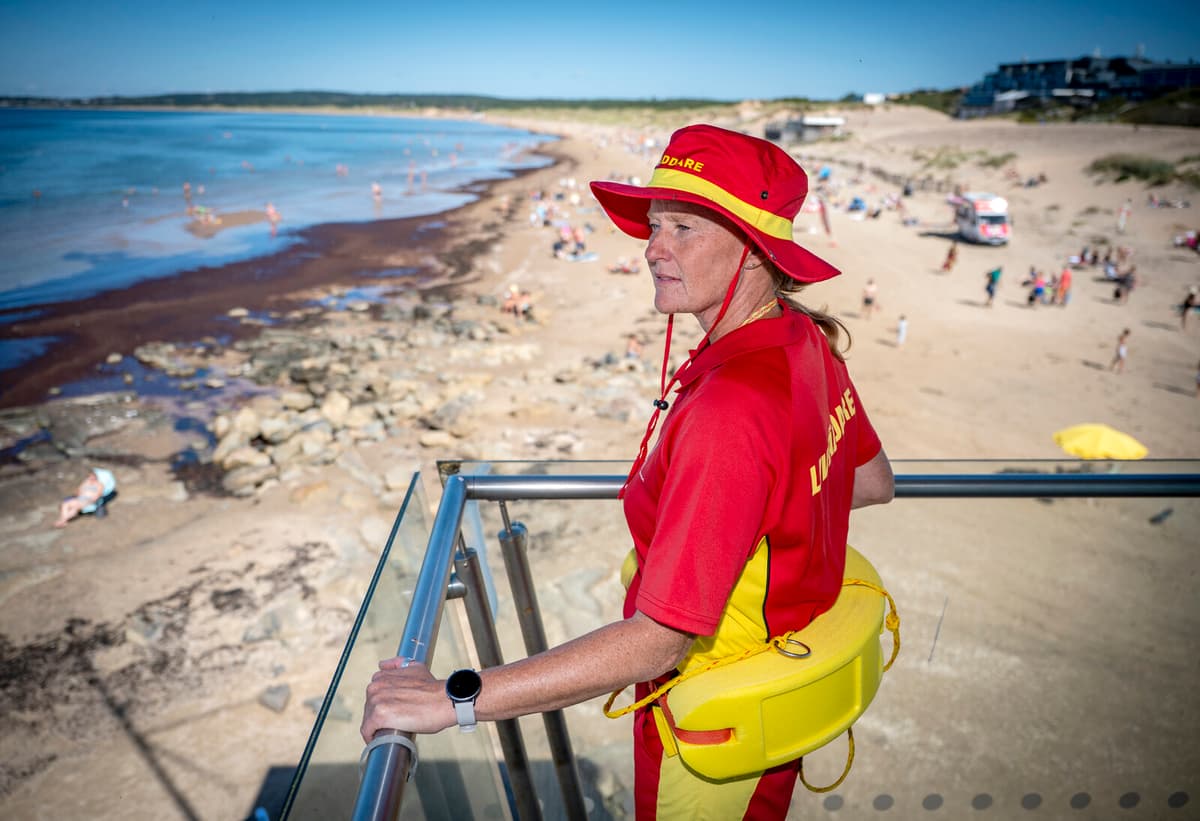30 fatalities in the sea, lakes, and pools just in July – two of them children. This summer, all figures point in the wrong direction, despite Sweden having a zero vision.
It's terrible. It's such a loss and in many cases an unnecessary loss. It shouldn't happen, says Louise Brädde.
Up in the lookout tower, she has a view of one of Sweden's most popular beaches, Tylösand in Halmstad, which during the finest days of the high season can attract 40,000 people.
Louise Brädde's path into the job as operations coordinator for the lifeguards in Tylösand was ten summers in a row as a volunteer beach guard. She has also had stints on other Swedish beaches and in Australia and can describe the panic in the eyes of a person who is about to drown.
A drowning occurs quietly. What you recognize a drowning by is the panic in the eyes, wide-open eyes, and then the mouth is bobbing up and down.
Incredible feeling
The six-kilometer beach is usually guarded from Midsummer and a bit into August by nine trained beach guards, equipped with flotation devices and radios. In jeeps on the beach, they have drones and rescue boards, and in the water, there are rescue boats.
Here, she has seen children on inflatable toys drift far out with the current and fall off.
It's an incredible feeling to save someone, but what we do most is prevent.
Sometimes there are big waves and strong currents, but here the drowning statistics don't look as bleak.
It very rarely happens that someone dies during the guarding time.
The beach guards don't hesitate to tap a bather on the shoulder and give tips on where the currents are going that particular day, or ask parents if they have control when a child is playing in the beach edge.
When the big waves come and the water breaks, the water is pressed in. Then it has to come out somewhere, and then an outflow is formed. The water is calm there, and that's where you often put your children.
Lack of pools in municipalities
There are no legal requirements for beach guarding, and guarded beaches are only found in eight municipalities today. Louise Brädde would have liked to see this on many more beaches, but the least each municipality should do is risk analyzes of public bathing areas and placement of life buoys and information signs.
The other major issue for municipalities is to take greater responsibility for access to teaching pools, she believes. It is written in the curriculum that all children should learn to swim 200 meters, but one of the problems for schools is pool access.
Everyone should be able to swim. It shouldn't be a cost issue or be about ethnic origin or which school you attend. Everyone should have the right to get water competence.
A perishable commodity
At the same time, she points to everything that we can all do, such as testing our own swimming ability every year. It's a perishable commodity, and just because you could swim 200 meters in waves when you were 17 doesn't mean you have the same ability when you're 40, 50, or 60.
Other basic tips are to never bathe alone and, as a parent, make sure to be really close when the children are bathing.
Alcohol is a strong contributing factor to many drownings.
We can see a pattern in the statistics: Many don't have a life jacket when they go boating, maybe they've had a beer, and they overestimate their swimming ability.
Call for help and alert 112 if no one else does.
Call out to the person in distress that help is on the way.
If it's possible to help the person in danger without jumping into the water yourself, that's best.
If the person in distress is further out in the water, you need to have something with you, preferably a life buoy or something else that floats, otherwise something that can be used as an extended arm.
It can involve great risk to come into direct contact with a person in distress. Even a small child can easily pull the lifeguard under the surface.
Always talk to the person in distress and maintain eye contact.
Source: Swedish Lifesaving Society





